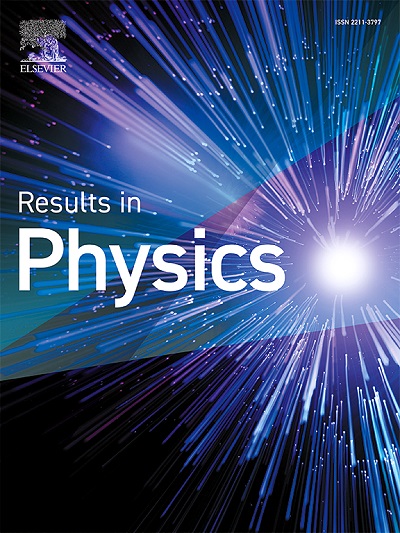手性孤子晶格主体YbNi3Al9中的非平衡自旋动力学
IF 4.6
2区 物理与天体物理
Q2 MATERIALS SCIENCE, MULTIDISCIPLINARY
引用次数: 0
摘要
提出了单轴手性磁性材料YbNi3Al9作为手性孤子晶格(CSL)的载体。在这项研究中,我们利用磁化(M)弛豫和电子自旋共振(ESR)技术深入研究了YbNi3Al9单晶的自旋动力学。m -弛豫分析清楚地揭示了YbNi3Al9非平衡态CSL的特征。在高度非线性的csl态中观察到一个延长的弛豫,表明手性磁孤子湮灭或成核过程中的非平衡自旋动力学,与未受挫磁簇模型一致。ESR研究显示,当磁场垂直于c轴(H⊥c)时,会有显著的微波响应,而当磁场与c轴(H//c)对齐时,则会观察到微弱的响应。对于H⊥c有两条共振线。低场下的共振信号归因于手性磁孤子的Goldstone激发,而高场下的共振信号与铁磁共振有关。这些发现增强了我们对YbNi3Al9单晶CSL的非平衡自旋动力学的理解,有利于手性磁孤子在自旋电子学中的应用。本文章由计算机程序翻译,如有差异,请以英文原文为准。

Nonequilibrium spin dynamics in the chiral soliton lattice host YbNi3Al9
The uniaxial chiral magnetic material YbNi3Al9 is proposed as a host for a chiral soliton lattice (CSL). In this study, we thoroughly investigate the spin dynamics in YbNi3Al9 single crystals using magnetization ()-relaxation and electron spin resonance (ESR) techniques. The -relaxation analysis clearly reveals characteristics of a nonequilibrium CSL in YbNi3Al9. A prolonged relaxation is observed in the highly-nonlinear-CSL state, indicating nonequilibrium spin dynamics during the annihilation or nucleation of chiral magnetic solitons, consistent with the unfrustrated magnetic cluster model. The ESR study shows significant microwave responses when the magnetic field is applied perpendicular to the -axis (), while a weak response is observed when the field is aligned with the -axis (). Two resonance lines are identified for . The resonance signal at lower fields is attributed to the Goldstone excitation of chiral magnetic solitons, while the signal at higher fields is associated with ferromagnetic resonance. These findings enhance our understanding of the nonequilibrium spin dynamics of the CSL in YbNi3Al9 single crystals and are beneficial for the application of chiral magnetic solitons in spintronics.
求助全文
通过发布文献求助,成功后即可免费获取论文全文。
去求助
来源期刊

Results in Physics
MATERIALS SCIENCE, MULTIDISCIPLINARYPHYSIC-PHYSICS, MULTIDISCIPLINARY
CiteScore
8.70
自引率
9.40%
发文量
754
审稿时长
50 days
期刊介绍:
Results in Physics is an open access journal offering authors the opportunity to publish in all fundamental and interdisciplinary areas of physics, materials science, and applied physics. Papers of a theoretical, computational, and experimental nature are all welcome. Results in Physics accepts papers that are scientifically sound, technically correct and provide valuable new knowledge to the physics community. Topics such as three-dimensional flow and magnetohydrodynamics are not within the scope of Results in Physics.
Results in Physics welcomes three types of papers:
1. Full research papers
2. Microarticles: very short papers, no longer than two pages. They may consist of a single, but well-described piece of information, such as:
- Data and/or a plot plus a description
- Description of a new method or instrumentation
- Negative results
- Concept or design study
3. Letters to the Editor: Letters discussing a recent article published in Results in Physics are welcome. These are objective, constructive, or educational critiques of papers published in Results in Physics. Accepted letters will be sent to the author of the original paper for a response. Each letter and response is published together. Letters should be received within 8 weeks of the article''s publication. They should not exceed 750 words of text and 10 references.
 求助内容:
求助内容: 应助结果提醒方式:
应助结果提醒方式:


